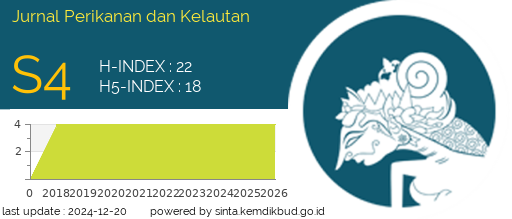Economic Valuation of Mangrove Ecosystem in Rempang Island, Batam City, Kepulauan Riau Province
DOI:
https://doi.org/10.31258/Keywords:
Economic Valuation, Mangrove, Sustainable ManagementAbstract
This study aimed to determine and analyze the economic value of the mangrove ecosystem in Rempang Island, Batam City, Kepulauan Riau Province. The survey method used a quantitative approach to analyze the economic valuation with the calculation of Total Economic Value (TEV), which consists of the calculation of use value: direct use value, indirect use value, option value, and non-use value: existence value and bequest value. There were 44 respondents determined by the Slovin method. The results showed that the total economic valuation of mangrove ecosystems on Rempang Island with an area of 2,813.18 ha which is IDR 75,082,590,695/ year, consisting of a total use value which is IDR 74,739,030,695/year and total non-use value which is IDR 343,560,000/year. The use value is obtained from direct use value which is IDR 2,059,200,000/year from fish, shrimp, and crab utilization activities, indirect use value which is IDR 72,004,878,483/year from breakwaters and abrasion, preventing seawater intrusion, nursery ground, feeding ground, spawning ground, and an optional value which is IDR 674,952,212/year from the value of biodiversity. Then, the total non-use value is obtained from the willingness to pay IDR 137,640,000/year and bequest value IDR 205,920,000/year. These findings indicate that the current ecological condition of the Rempang Island mangrove ecosystem has provided excellent economic value, so efforts are needed to maintain this condition with sustainable management.
Downloads
References
[DLH] Dinas Lingkungan Hidup Kota Batam. (2023). Kerusakan lingkungan di Kota Batam. Batam.
Ariftia, R.I., Qurniati, R., Herwanti, S. (2014). Nilai ekonomi total hutan mangrove Desa Margasari Kecamatan Labuhan Maringgai Kabupaten Lampung Timur. Jurnal Sylva Lestari, 2(3): 19–28.
Fahrudin, A. (1996). Analisis ekonomi pengelolaan lahan pesisir Kabupaten Subang, Jawa Barat. IPB University. Bogor.
Febriannaningsih, B.A., Khakhim, N. (2015). Aplikasi citra Landsat TM (Thematic Mapper) dan Oli (Operational Land Imager) untuk pemetaan perubahan tutupan dan kerapatan mangrove tahun 1990-2015 di Pulau Batam dan sekitarnya. Jurnal Bumi Indonesia, 4(4): 1–10.
Freeman, A.M. (2003). Economic valuation: What and why BT - A primer on non-market valuation (P. A. Champ, K. J. Boyle, & T. C. Brown, Eds.). Dordrecht: Springer Netherlands
Haga, J., Siburian, R. (2016). Konservasi mangrove dan kesejahteraan masyarakat. Yayasan Pustaka Obor Indonesia. Jakarta
Ismail, K., Habibah, S.N. (2023). The low level of sustainability of fishing households livelihood assets around marine conservation areas. Bio Web Conferences,06003.
Karminarsih, E. (2007). The use of ecosystem mangrove in minimalize disaster impact in beach area. Jurnal Manajemen Hutan Tropika, 13(3): 182–187.
Kelurahan Rempang Cate. (2023). Profil Kelurahan Rempang Cate.
Kelurahan Sembulang. (2023). Profil Kelurahan Sembulang.
Keputusan Gubernur Kepri. (2023). Standar satuan harga Provinsi Kepri tahun anggaran 2024. Pub. L. No. 1103 tahun 2023, 1151. Republik Indonesia: Pemerintah Provinsi Kepulauan Riau.
Khairunnisa, K., Abdillah, Y., Wahyudin, W. (2022). Value of the mangrove ecosystem in Kawal Village, Bintan Regency. Journal of Akuatik Lestari, 5(2): 97–101.
Khodijah, K. (2014). Sustainable livelihoods of fishermen households headed by women (Case study in Riau Islands Province of Indonesia). Asian Social Science, 10(9).
Kurniawati, N.D., Pangaribowo, E.H. (2017). Valuasi ekonomi ekosistem mangrove di Desa Karangsong, Indramayu. Jurnal Bumi Indonesia, 6(2).
Purnamasari, F., Adi, W., Febrianto, A. (2022). Identification of the economic value of the mangrove forest ecosystem in the District of Tanjung Tedung Central Bangka Regency. Journal of Tropical Marine Science, 5(2): 111–120.
Ruitenbeek, H.J. (1992). Mangrove management: An Economic analysis of management options with a focus on Bintuni Bay, Irian Jaya. Canada.
Ruitenbeek, H.J. (1994). Modelling economy-ecology linkages in mangroves: Economic evidence for promoting conservation in Bintuni Bay, Indonesia. Ecological Economics, 10(3): 233–247.
Sambu, A H., Sribianti, I., Chadijah, A. (2018). Model pengelolaan mangrove berbasis ekologi dan ekonomi. Inti Mediatama. Makassar.
Setiyowati, D., Supriharyono, S., Triarso, I. (2016). Economic valuation of mangrove resources in the Mangunharjo Village Tugu Sub District, Semarang City. Saintek Perikanan, 12(1): 67–74







